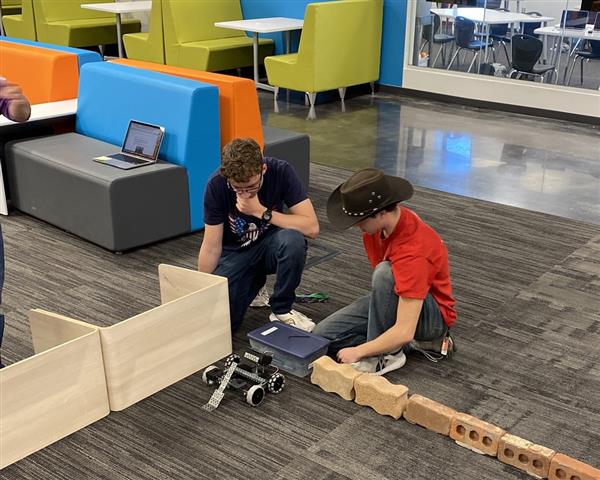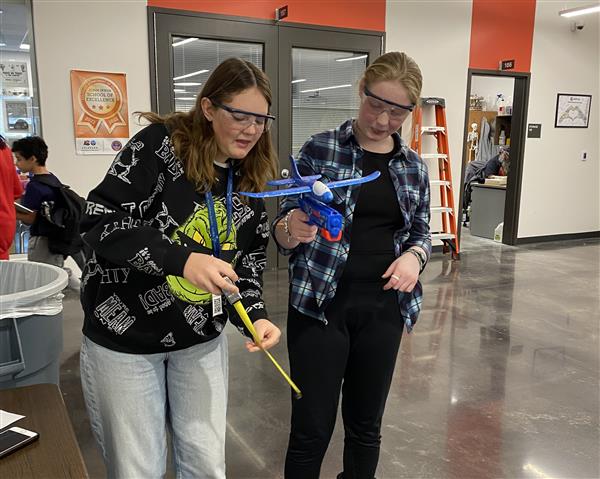-
STEM (Science, Technology, Engineering, and Math)
Our world would be a different place without engineers and all of the technologies, devices, structures and systems they create—vehicles, phones, bridges, medical devices, factories, appliances and software apps—just to name a few. The best way to learn about design and engineering is to take on a design challenge, following the steps of the engineering design process. In order to develop optimal solutions, engineers must identify criteria and specifications for the problem, recognize constraints to solving the problem and then use math and science principles to come up with solutions. Engineers design and test their solutions to evaluate how well they address the problem, an iterative process until success is achieved.
STEM classes are designed for students to be hands-on creative learners as they “engineer” solutions to challenges. Students will apply science and engineering practices and utilize basic math principles as they analyze, design, create, and evaluate a variety of unique challenges.
STEM A: Taking Flight with STEM – Gliders, Airplanes, Helicopters, Drones, Rockets, and (Possibly) Space Exploration (grades 7 and up)
In this course, we begin with the principles of flight. Students will learn the science and math concepts on how gliders fly. Students will make modifications to their gliders to learn the engineering and design process. Students will then apply their understanding of gliders to how airplanes operate. As they study airplanes, students will learn how planes create lift, which
involves exploration of air pressure and how wings use Bernoulli's principle to change air pressure. Next, students explore the other three forces acting on airplanes—thrust, weight and drag. Following these lessons, students learn how airplanes are controlled and use small models (Including RC
planes) to demonstrate these principles. Students will then use engineering to improve the flight of their model planes. We will then explore the principles behind helicopters and fly RC helicopters and drones. Students will learn about Newton’s Laws and if time permits -we will see how these laws are applied as we will delve into rocketry and students design, construct, test, and analyze various (model) rockets.
STEM B: Robotics (students in grades 8 and up who have successfully completed Pre-Algebra)
This is a beginning course in robotics. Students will be utilizing robotics kits, software and other various robotics materials to program (code), design, build, and adapt robot projects to complete designated tasks. Students will be introduced to basic coding and sensors using “Spheros”. Students will then work hands-on in teams to design, build, program, and document their progress as they build various robots using the Legos Mindstorm EV-3 kit or Vex V5 kits.
After obtaining basic coding skills, students will be tasked with engineering and coding their robots to meet challenges. Topics in Robotics will include: Block coding, Introduction to text programming (Javascript, C/C++, Vex code), motor control, gear ratios, torque, friction, sensors, timing, program
loops,decision-making, timing sequences, and engineering principles.





